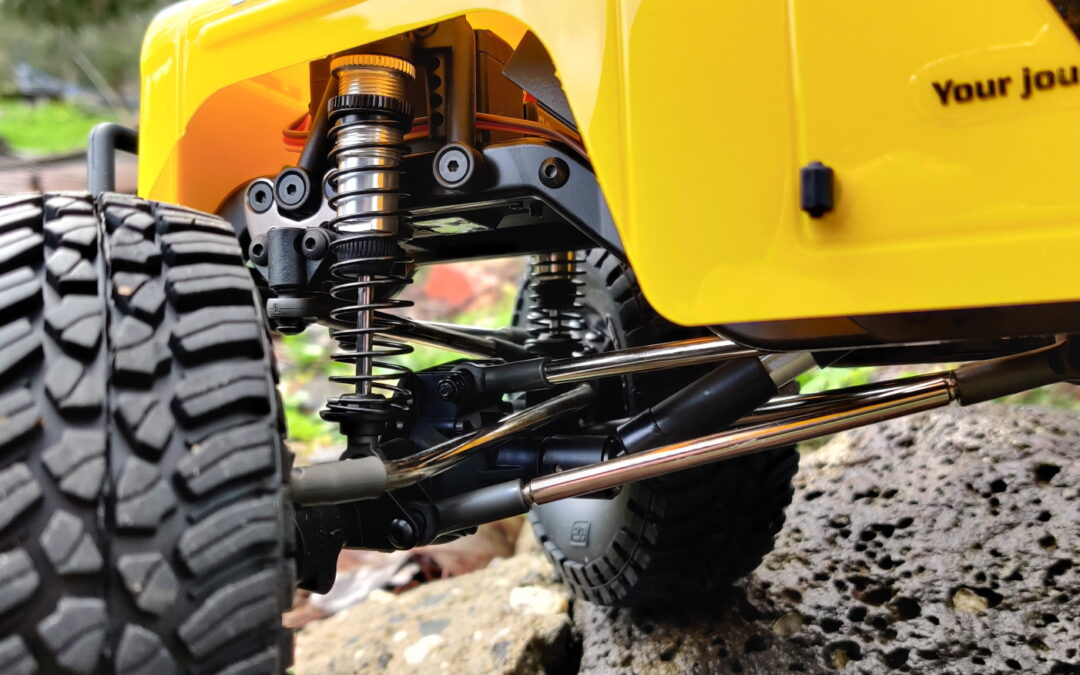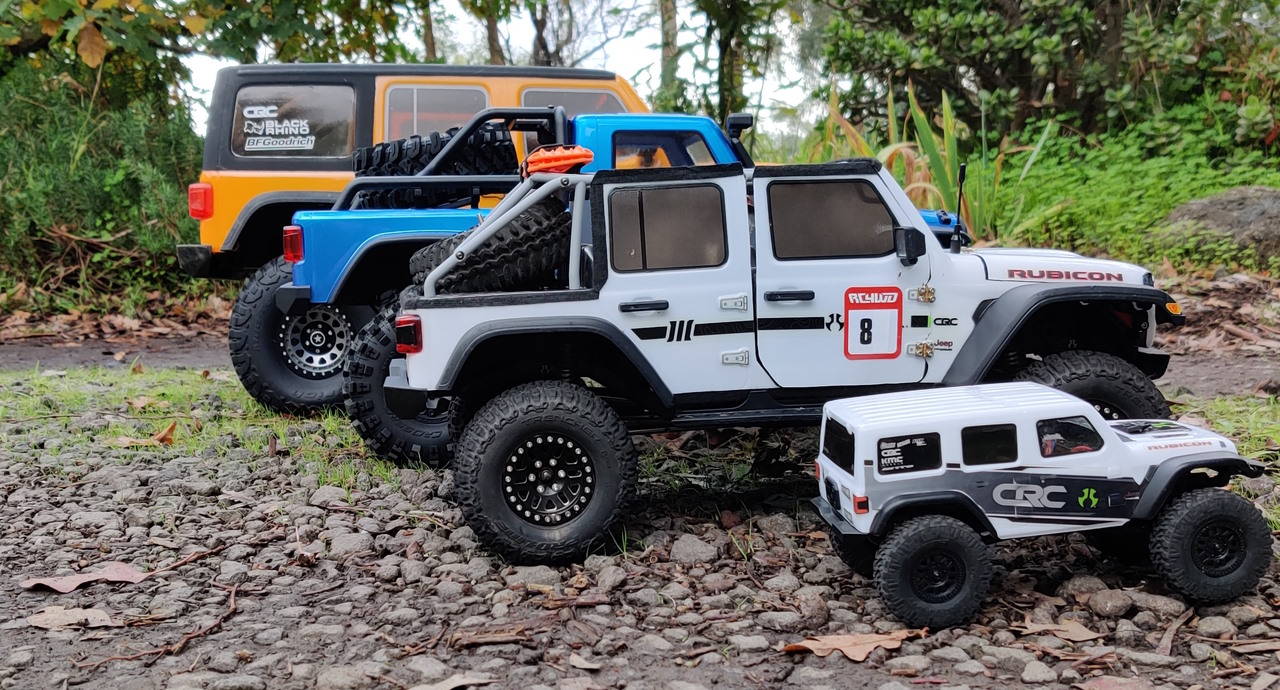June 13, 2022 – video comment from EP RC
Why does front axle overdrive work better than [just driving faster]? That must work better, as with overdrive on an axle you are constantly losing traction somewhere just to make any progress.
A. Overdrive (commonly referred to as ‘o/d’) is a rock crawling thing. Overdriving the front axle makes the front wheels turn faster than the rear wheels, typically by 5% to 15%, but there are implementations out there of up to 33%!
Overdrive can be achieved by driving the front axle faster or the rear axle slower. Ring and pinion gear ratios can be changed so the difference happens on the axle at each or either end. Alternatively some transfer cases have a provision to drive the front faster than the rear, such as the StealthX transmission from Element RC’s Enduro line.
Overdriving the front helps the vehicle maintain direction on difficult climbs where traction is low. It does this in two ways:
- It lets the front pull the rear onto and through problems.
- It also maintains a low loading effect on the suspension by way of that front/rear wheel speed difference. This is thought to aid traction on rock problems, though it would be undesirable on flat, high traction surfaces.
On steep ascents without overdrive, the rear has more of the vehicle’s weight on it and so often has more traction available than the front axles. With that extra traction, the rear will work to push the vehicle forward. This hinders it from turning in whatever direction you’re steering. It’s like a slow-motion, understeer effect that is undesirable on rock problems.
There are a few ways to address this understeer effect:
- DIG (DIsengageable Gear) locks the rear drive, such as in the VS4-10 Phoenix and SCX10 III. You can then drag the nose of the rig around with the front while the rear stays in place. (You can also use DIG to ‘DIG up’ by loading the suspension and drive line before popping the rear drive back on, but that’s for another discussion!)
- Remote locking and unlocking rear diffs (such as on the TRX4) also can help bring the vehicle’s nose to the direction you want by lowering the drive (or authority) over the vehicle’s direction from the rear.
Both of these options mean the front wheels do more of the work, pulling the vehicle round to whatever direction you want to face. Unlocking the rear diff isn’t as effective as DIG, but both have their place in crawling.
Overdrive is another way to address the understeer issue. By keeping the suspension slightly loaded and keeping more of the traction authority up-front with that higher wheel speed, your crawler will more consistently and reliably reach the line you’re trying to drive.


